Knee Arthritis — Stem Cell Therapy: treatment in the Best Hospitals of Germany
Treatment prices are regulated by national law of the corresponding countries, but can also include additional hospital coefficients. In order to receive the individual cost calculation, please send us the request and medical records.
Treatment of Knee Arthritis in Germany
- Diagnostics
- Arthroscopic or open surgery and transplantation of cartilage
- Total knee replacement
- Diagnosis and conservative treatment
- Total knee replacement and rehabilitation
- Endoprosthesis replacement in knee arthritis
- Endoprosthesis replacement in knee arthritis with rehabilitation
- Collagen or Polyurethan (ACTIFIT) Meniskus Implantat
- Treatment with autologous conditioned plasma (ACP)
- Autologous chondrocyte implantation (ACI)
- Orthopedic rehabilitation
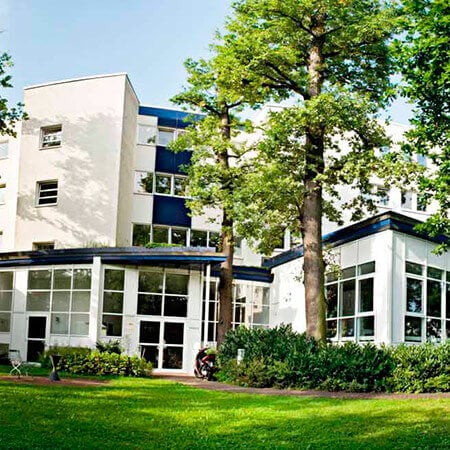
Department of Alternative Medicine
Clinic of Advanced Biological Medicine annually admits over 410 patients with knee arthritis. Specialists of the Department of Alternative Medicine perform stem cell therapy, which restores the joint even in the most complicated cases. Head physician of the department, Dr. med. G. Siebenhüner has been engaged in the research activity for more than 36 years and now complements traditional medicine options with effective alternative methods.
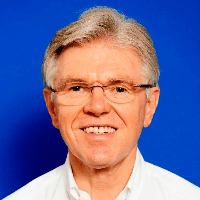
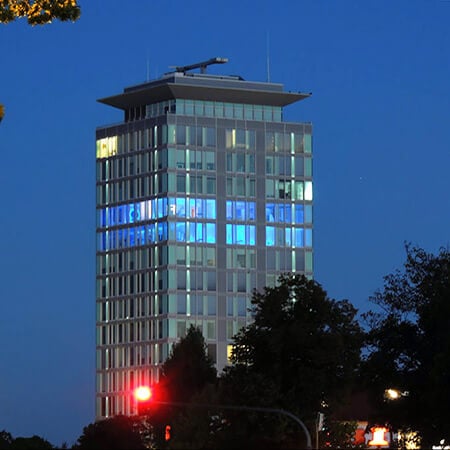
Department of Orthopedics
The Department of Orthopedics offers the comprehensive diagnostics using high-precision imaging equipment, as well as conservative and surgical treatments for all diseases, injuries and functional limitations of the musculoskeletal system. The department uses the very latest treatment methods, such as acupuncture, autohemotherapy, PRP therapy, shockwave therapy, K-Taping therapy, etc. In the field of surgical treatment, the preference is always given to minimally invasive, endoscopic and arthroscopic operations.
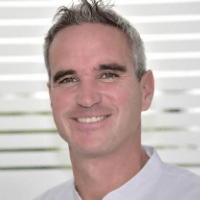


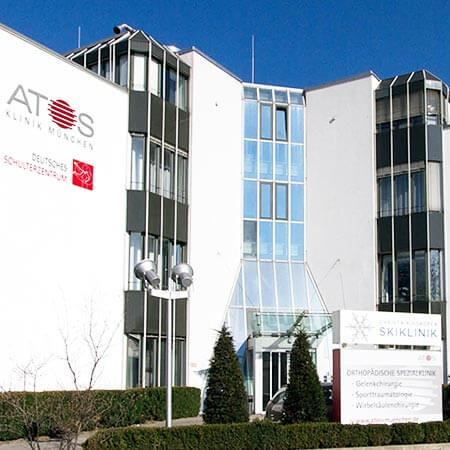
Department of Orthopedics, Foot Surgery, Hand Surgery and Spinal Surgery
According to the prestigious medical magazine Focus, the Department of Orthopedics, Foot Surgery, Hand Surgery and Spinal Surgery is one of the best medical facilities in Germany, specializing in shoulder and knee surgery, foot surgery, and hand surgery! The department offers a full range of medical services for diseases of the musculoskeletal system. The key focus of the department's doctors is the treatment of diseases of the large joints: knee, hip, shoulder, elbow, ankle, and wrist. Foot surgery specialists are responsible for the correction of hallux valgus, hallux rigidus, clubfoot, flatfoot, and claw toes, as well as the treatment of ankle arthrosis, heel spurs, and Achilles tendon ruptures. The department regularly admits patients with hand diseases, with particular interest in the treatment of wrist arthrosis, rhizarthrosis, carpal tunnel syndrome, and Dupuytren's contracture. The therapeutic offer is complemented by conservative and surgical treatment of spinal diseases such as herniated discs, spinal canal stenosis, vertebral fractures, and others. The department's medical team offers patients effective conservative treatment methods. However, when surgery is required, arthroscopic and minimally invasive techniques are preferred to ensure the fastest possible postoperative recovery and a high level of safety.
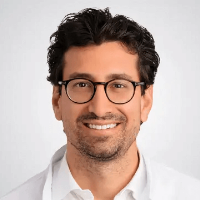
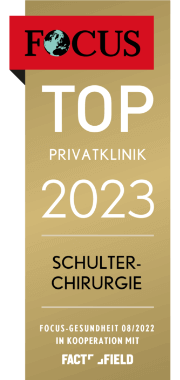
- What are stem cells
- What is gonarthrosis
- Why stem cells are better than standard therapy
- Where are stem cells located?
- How are stem cells harvested from adipose tissue?
- What results can be expected?
- Treatment safety
- Combination with other treatments
- Why is it worth undergoing treatment in Germany?
Gonarthrosis is one of the most common musculoskeletal diseases. The risk of its development increases with age. Knee osteoarthritis affects about 15% of the population over 60 years old. Sometimes it develops in young people, usually after sports injuries due to meniscus tear or ACL injury. Gonarthrosis affects 2% of the population under 45 years of age. In Germany, you can undergo treatment for this disease using cell technology. Innovative medical procedures can avoid or delay knee replacement surgery. The average cost of stem cell therapy in Germany for knee arthritis (gonarthrosis) is between 14,500 EUR and 20,800 EUR.
What are stem cells
Stem cells are unspecialized cells from which several hundred types of specialized cells mature, performing a wide variety of functions in the body. The precursors are called stem ones since they resemble a tree trunk, from which other cells then grow in different directions.
In the process of maturation, stem cells can specialize in different directions. This phenomenon is called differentiation. They can self-produce and self-renew. They are often called immortal, although this is not true: the life span of stem cells is indeed long, but still, it is limited.
Stem cells were discovered by Russian scientist Alexander Maksimov. He announced their existence in 1908 at the German Society of Hematology Congress in Berlin. Maximov later called these cells stem cells by analogy with a tree.
Already in 1940, the first successful stem cell transplantation was performed. A patient with aplastic anemia received 13 ml of bone marrow from a twin brother.
There are two types of stem cells: hematopoietic (precursors of blood cells) and mesenchymal (long-lived and rarely dividing). Mesenchymal stem cells are predominantly used in orthopedics. Orthopedics is the second field of their application after oncohematology.
What is gonarthrosis
Gonarthrosis (knee arthrosis) is a chronic degenerative disease caused by the gradual destruction of articular cartilage. The disease proceeds in four stages. The last one, the only treatment option, can be only joint replacement surgery. At stages, 2-3, conservative therapies, minimally invasive procedures, and arthroscopic surgeries are often used. Stem cells are one of the options for treating stage 2-3 arthrosis.
Causes of osteoarthritis:
- age-related cartilage wear;
- obesity;
- injuries, including sports ones;
- the alternated axis of the lower extremity;
- inflammatory diseases;
- genetic predisposition.
The cartilage gradually degrades, and it practically cannot be restored since it is deprived of blood supply. Metabolic processes proceed very slowly in hyaline cartilage. They can be stimulated with cell therapy.
Arthrosis is a chronic disease that cannot be cured entirely. The goal of therapy is to improve the patient's quality of life and slow down the progression of the disease. Doctors try to improve knee function, relieve pain, slow down cartilage degradation, and delay knee replacement surgery. Cell therapy contributes to the achievement of all these goals.
Why stem cells are better than standard therapy
The most effective treatment option for the disease is knee replacement surgery. However, the operation is traumatic and requires a long recovery. In the early stages, conservative treatment of the pathology is preferred.
Standard methods include the use of the following treatments:
- intake of nonsteroidal anti-inflammatory drugs – relieves pain but does not slow down the progression of the disease;
- intake of chondroprotectors – has no proven effectiveness;
- physiotherapy, therapeutic exercises, and limb unloading – provide a symptomatic effect;
- Intra-articular injections of glucocorticoids – quickly eliminate the symptoms of the disease but accelerate the degeneration of articular cartilage and only bring replacement surgery closer.
Doctors abroad use cellular technologies, including mesenchymal stem cells, for the treatment of arthritis. They are injected into the joint. These cells secrete growth factors and mature into chondrocytes, replacing defects in hyaline cartilage. Stem cells stimulate tissue regeneration to slow down the development of arthritis.
Where are stem cells located?
Sources of stem cells that are used in medicine can be:
- bone marrow;
- peripheral blood;
- adipose tissue.
Mesenchymal stem cells from adipose tissue are most often used in orthopedics for the treatment of knee arthrosis, lesions of other joints, long-term non-healing bone fractures, tears of the menisci, and ACL. This is because there are more stem cells in it than in the blood, and the process of harvesting them is more straightforward than from the bone marrow. Obtaining adipose tissue is a simple procedure that is performed under local anesthesia. The doctor inserts a needle under the skin of the abdomen and aspirates the required amount of adipose tissue with a syringe.
Another advantage of adipose tissue: in addition to mesenchymal stem cells, it also contains other substances that accelerate tissue regeneration. These are precursors of endothelial cells, preadipocytes, fibroblasts, and mast cells.
Adipose tissue contains a high concentration of mesenchymal stem cells, so they do not need to be cultured. This reduces the risk of cell mutations that can affect their biological properties. In addition, knee injections can be performed immediately after receiving adipose tissue – on the same day.
Adipose tissue contains more cells per unit volume than bone marrow. In addition, they are of the best quality: they are more genetically stable, have a low aging coefficient, and have high proliferative activity.
How are stem cells harvested from adipose tissue?
The stromal vascular fraction is obtained from adipose tissue, rich in stem cells. It is injected into the knee to restore cartilage, meniscus, ACL, capsule, and other damaged structures.
The adipose tissue is taken from the patient. This is a liquid called lipoaspirate. It is washed with saline and phosphates and subjected to fermentation. Then the enzymes are inactivated, the cell suspension is flushed out, and the unsplit adipose tissue fragments are removed using a filter. Then the number and viability of cells are estimated, and the joint injection is performed.
The manual method is rarely used in clinics abroad. More often, special devices are used in which lipoaspirate can be placed, and at the output, the stromal vascular fraction suitable for intra-articular injection can be obtained. Such devices use more advanced and fully automated technologies to isolate stem cells without enzymes and centrifugation. Therefore, fewer cells are damaged, and harvesting them takes less time.
What results can be expected?
Stem cells for accelerating articular cartilage regeneration have been used relatively recently. It was approved in the US and Europe in 2016. However, even before this procedure became part of standard treatment, it was used in clinical trials. Stem cells were first used for knee arthritis in 2001. Therefore, today we have information about the long-term efficacy and safety of this procedure. Some trials show that good results can last up to 7 years.
The effect after the injection does not develop immediately, perhaps even a temporary aggravation of symptoms. However, patients notice a significant decrease and even the disappearance of pain a month after the injection. Reduced need for nonsteroidal anti-inflammatory drugs: patients can reduce dosage and frequency of use, essential for preventing gastrointestinal bleeding.
When using MRI, doctors see an increase in the thickness of hyaline cartilage in 73% of cases after three months and in 82% of patients after six months. Most of those treated with stem cells have the effect of relieved pain and improved joint function for six months or more. If the condition worsens, the injection can be repeated.
Some trials show the preservation of a positive result after the injection of stem cells, even three years after a single injection. Most patients have no X-ray signs of knee osteoarthritis progression.
Treatment safety
The procedure for obtaining adipose tissue is safe and takes only a few minutes. It is virtually painless as it is performed under local anesthesia. This manipulation will allow the doctor to harvest the necessary amount of stem cells and get rid the patient of a small amount of excess belly fat to improve the appearance.
Stem cells themselves do not pose any threat to health. They are the patient's own, but not the donor ones, so they are accepted by the body and do not cause inflammatory reactions.
Knee injection is a simple and minimally invasive procedure. It is performed under local anesthesia. Sometimes it causes complications, but they are very rare. The doctor minimizes the risk of infectious complications with the help of a particular injection technique. At first, the needle is inserted into the skin, then it moves back, and the needle penetrates further through the joint capsule. As a result, after removing the needle, the skin moves back and hermetically closes the puncture from the needle, so the articular cavity does not interact with the external environment.
The complications caused by stem cell injection are infrequent. With an intensive growth of cartilage in the defect area, a "plus tissue" is formed. It can be a source of pain. In such cases, arthroscopic surgery is required to resurface the cartilage.
Combination with other treatments
Stem cell injections into the knee are often combined with platelet-rich plasma or hyaluronate injection.
Platelet-rich plasma (PRP) is another cell therapy option. Doctors take blood from the patient, centrifuge, and remove excess fluid and immune cells. As a result, plasma is obtained, in which the concentration of platelets is ten times or higher than in whole blood. This plasma is injected into the joint to promote cartilage regeneration.
PRP combines well with stem cells. Firstly, they not only stimulate their recovery but also slow down the destruction. Secondly, adipose tissue stromal cells produce VEGF, an inhibitor of cartilage growth. Platelet-rich plasma eliminates this effect by inhibiting VEGF production.
Stem cells do not work immediately after being injected into the joint. A person receives the first results only after a few weeks and the final results – after a few months. So the patient can get rid of pain earlier, stem cell treatments are often supplemented with hyaluronic acid injection. This drug is a synovial fluid prosthesis of the knee. It acts as a lubricant for the joint, softening the friction of the cartilage. The effect after a single injection lasts up to 1 month or more, depending on the molecular weight of the hyaluronic acid used.
Why is it worth undergoing treatment in Germany?
The German healthcare system is considered one of the best in the world. Innovative medical procedures and surgeries are used here for the treatment of arthrosis at any age: both in the elderly and young patients with gonarthrosis after a sports injury. Here are a few reasons for you to undergo stem cell therapy in Germany:
- vast experience in the use of the procedure;
- standardized methods;
- instrumental isolation of the stromal vascular fraction instead of the manual method to save more stem cells;
- whenever possible, injections of "fresh" cells are made, but not preserved and not cultured ones;
- the successful application even at three stages of gonarthrosis;
- Successful combination of the treatment method with injections of platelet-rich plasma and hyaluronate. As also as other conservative treatments for arthrosis.
To undergo stem cell therapy in Germany, you are welcome to use the Booking Health service. On our website, you have the opportunity to get up-to-date and accurate information about the average cost of treatment in Germany, compare prices in different German hospitals and book a medical care program at an affordable price. Treatment or rehabilitation will be easier and faster for you, and the cost of treatment in Germany will be lower.
Please leave your request on the Booking Health website. Our employee will contact you, consult and answer all questions. We will take care of the organization of your trip abroad. We provide the following benefits for you:
- We will select the best German hospital whose doctors specialize in stem cell therapy and achieve the best results.
- We will help you overcome the language barrier and establish communication with the doctor in the German hospital.
- We will reduce the waiting period for treatment, and you will receive medical care on the most suitable dates.
- We will reduce the price. The cost of treatment in Germany will be lower than usual due to the lack of overpricing and coefficients for foreign patients.
- Our experts will cover all organizational issues: paperwork, transfer from the airport to the German hospital and back, hotel booking, and interpreting.
- We will prepare your documents and translate them into English or German. You do not have to undergo previously performed diagnostic procedures.
- We will keep in contact with the German hospital after treatment.
- We will organize additional diagnostics, treatment, or rehabilitation in a German medical center. if required
- We will buy medicines in another country and forward them to your native country.
While the best specialists in the world take care of your health, the Booking Health staff will help you reduce the cost of treatment in Germany and take care of all your travel arrangements.
Authors:
The article was edited by medical experts, board certified doctors Dr. Nadezhda Ivanisova and Dr. Vadim Zhiliuk. For the treatment of the conditions referred to in the article, you must consult a doctor; the information in the article is not intended for self-medication!
Our editorial policy, which details our commitment to accuracy and transparency, is available here. Click this link to review our policies.
Sources:

